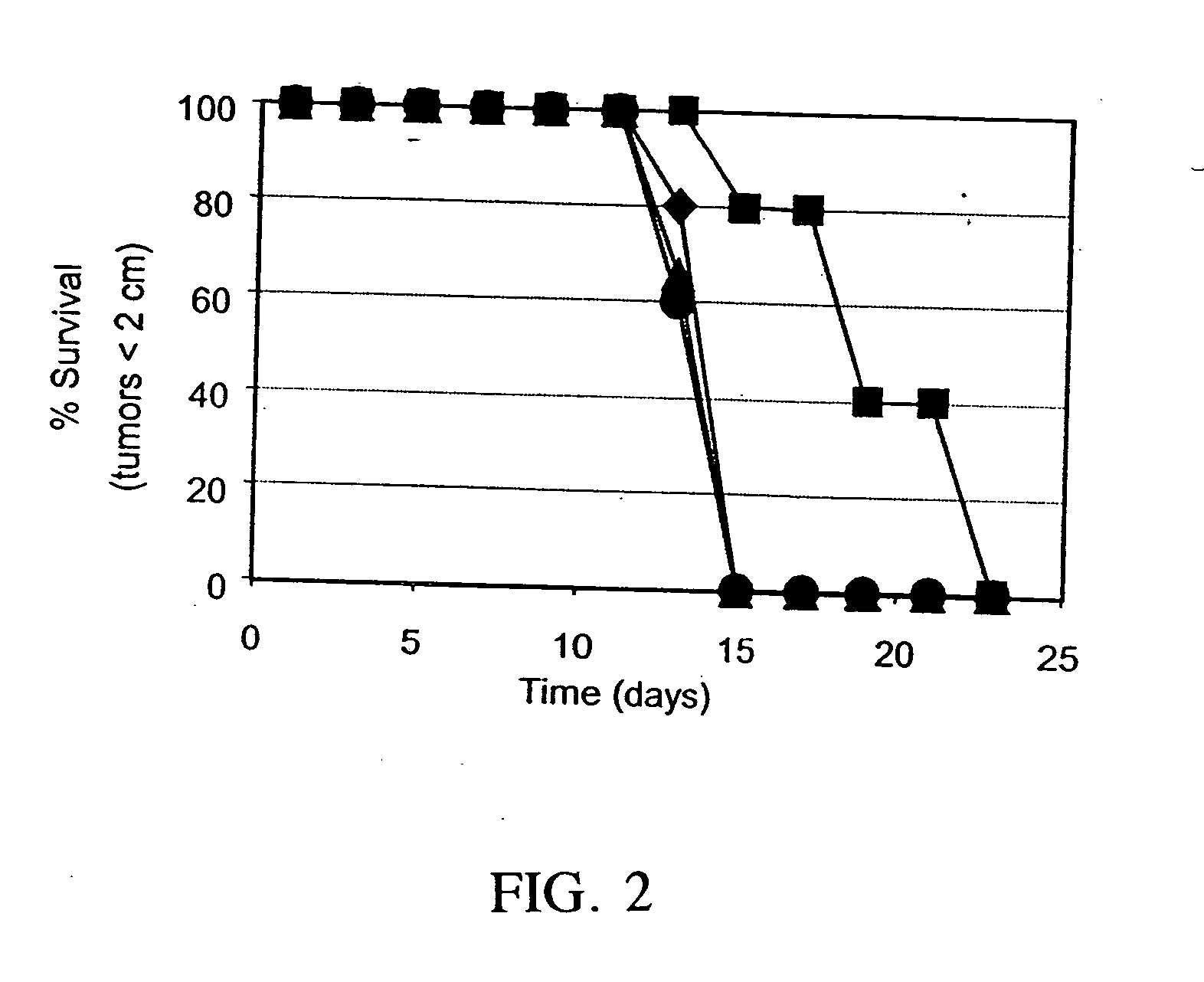Inhibition of li expression in mammalian cells
- Summary
- Abstract
- Description
- Claims
- Application Information
AI Technical Summary
Benefits of technology
Problems solved by technology
Method used
Image
Examples
example 1
Construction of an Adenoviral Vector Containing the CIITA cDNA.
[0136] The initial goal of this experiment was to construct an adenoviral vector for efficient induction of MHC class II molecules in MHC class II molecule negative cells (e.g., MC-38 and Renca). The CIITA gene construct, including a CMV promoter and poly A tail, was excised from a CIITA-containing pCEP4 vector (obtained from Dr. L. Glimcher) using Sal1. This fragment was ligated into pBluescript to create pBlue / CIITA. pBlue / CIITA was then digested with EcoRV and XhoI to release a DNA fragment including the CMV promoter, CIITA cDNA and poly A signal, which was ligated into pQBI / BN (Quantum, Montreal, Canada) to create pQBI / BN / CIITA.
[0137] This vector was co-transfected into 293A adenoviral packaging cells with Cla1 digested adenoviral DNA (the left arm of the virus was deleted to reduce background) according to the manufacturer's instruction. Three weeks after co-transfection, resulting plaques were screened by PCR us...
example 2
Generation of the MHC Class II+ / Ii− Phenotype by Infection with Adeno / CIITA Plus Treatment with Ii Antisense Oligonucleotides.
[0138] This example demonstrates the generation of cells expressing the MHC class II+ / Ii− phenotype by infection of cells with adeno / CIITA and inhibition of Ii expression by defined Ii antisense oligonucleotides. The Ii antisense oligonucleotide had been previously demonstrated to be effective (Qiu et al., Cancer Immunol. Immunother. 48: 499-506 (1999)). Control experiments included: a) no treatment; b) adeno / CIITA construct alone; c) adeno / CIITA construct together with sense control oligonucleotide; and d) adeno / CIITA construct together with four-nucleotide mismatched control antisense oligonucleotide. Briefly, 1.5×106 MC-38 cells were seeded into 25 cm2 flasks 24 hr before electroporation with oligos and infected in 5 ml total volume media containing 1.5 ml virus stock solution (1.26×106 PFU / ml) for 48 hr. After the first 24 hr of infection, 10 ml of fres...
example 3
Tumor Protection by MHC Class II+ / Ii− Tumor Vaccine.
[0141] For these studies, MC-38 tumor vaccine cells were prepared as described above and used to inoculate 6-7 week old, female C57BL / 6 mice (Jackson Labs). Specifically, MC-38 cells were infected with adeno / CIITA as described, divided into four groups and treated by electroporation with: a) nothing; b) 50 μM Ii antisense oligonucleotide; c) 50 μM mismatch control oligonucleotide; or d) 50 μM sense control oligonucleotide, and seeded into flasks. After 24 hr, fresh media was added and cells were incubated for an additional 3 hr. Cells were then trypsinized, lethally irradiated with 50 Gy (Cesium source) and 1.2×106 cells / mouse were inoculated into mice. Five weeks later, mice were challenged with 5×105 parental MC-38 cells and monitored for appearance of tumors. As shown in FIG. 2, inoculation with Ii antisense treated, adeno / CIITA infected MC-38 cells provided better protection against tumor growth relative to all other control ...
PUM
| Property | Measurement | Unit |
|---|---|---|
| Length | aaaaa | aaaaa |
| Interference | aaaaa | aaaaa |
| Antigenicity | aaaaa | aaaaa |
Abstract
Description
Claims
Application Information
 Login to View More
Login to View More - R&D
- Intellectual Property
- Life Sciences
- Materials
- Tech Scout
- Unparalleled Data Quality
- Higher Quality Content
- 60% Fewer Hallucinations
Browse by: Latest US Patents, China's latest patents, Technical Efficacy Thesaurus, Application Domain, Technology Topic, Popular Technical Reports.
© 2025 PatSnap. All rights reserved.Legal|Privacy policy|Modern Slavery Act Transparency Statement|Sitemap|About US| Contact US: help@patsnap.com



